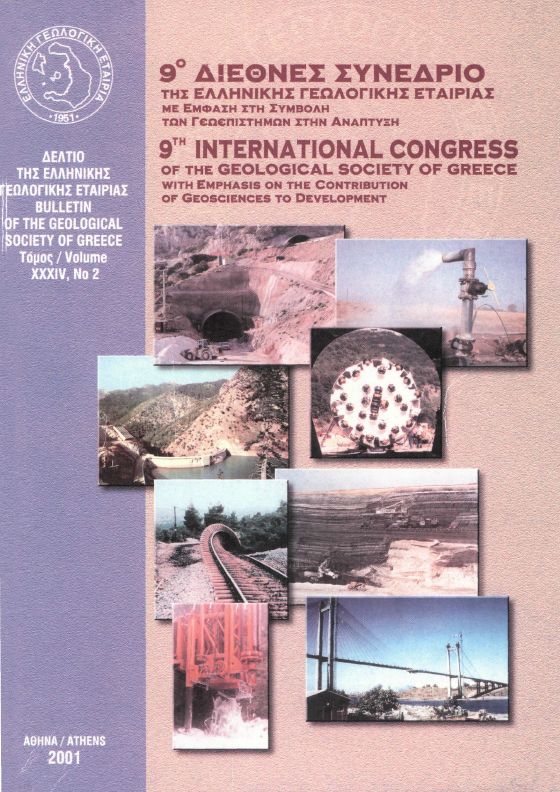ASSESSING THE SUITABILITY OF GROUNDWATER FOR DRINKING AND AGRICULTURAL USES IN THE ZACHARO BASIN, SW PELOPONNESUS

Abstract
The hydrochemical character of the Zacharo basin groundwaters and their suitability for drinking and irrigation purposes are evaluated in this paper. The Pindos karst aquifer, the Neogene and the alluvial aquifer are the three most mportant aquifers of the study area. 46 water samples were taken from wells, boreholes and spring and they analyzed for the physicochemical parameters (pH, EC and TOC), major ions (Ca2+, Mg2+, Na+, K+, NH4+, HCO3-, Cl-, F-, SO4 2- and NO3-) and trace metals (B, Fe, Mn, Cr, Pb, Se, Ni). The suitability of groundwaters for drinking and irrigation is evaluated by the calculation of Water Quality Index and the indices SAR, %Na, RSC and KR. The water of the karstic and alluvial aquifer is of “excellent” quality for both uses. On the other hand, the Neogene aquifer shows serious problems in respect with the degradation of water quality, since 20% of the samples are of “poor” and “extremely poor” quality for drinking purposes and 33% are “unsuitable” for irrigation. The degradation of water quality is attributed to natural processes of enhanced ion exchange, since the cation exchange capacity of the aquifer materials is increased due to the presence of clay minerals and organic matter.
Article Details
- How to Cite
-
Panagopoulos, G., Lambrakis, N., Chalvantzis, C., Bekiari, V., & Avramidis, P. (2016). ASSESSING THE SUITABILITY OF GROUNDWATER FOR DRINKING AND AGRICULTURAL USES IN THE ZACHARO BASIN, SW PELOPONNESUS. Bulletin of the Geological Society of Greece, 50(2), 899–906. https://doi.org/10.12681/bgsg.11795
- Section
- Engineering Geology, Hydrogeology, Urban Geology

This work is licensed under a Creative Commons Attribution-NonCommercial 4.0 International License.
Authors who publish with this journal agree to the following terms:
Authors retain copyright and grant the journal right of first publication with the work simultaneously licensed under a Creative Commons Attribution Non-Commercial License that allows others to share the work with an acknowledgement of the work's authorship and initial publication in this journal.
Authors are able to enter into separate, additional contractual arrangements for the non-exclusive distribution of the journal's published version of the work (e.g. post it to an institutional repository or publish it in a book), with an acknowledgement of its initial publication in this journal. Authors are permitted and encouraged to post their work online (preferably in institutional repositories or on their website) prior to and during the submission process, as it can lead to productive exchanges, as well as earlier and greater citation of published work.









